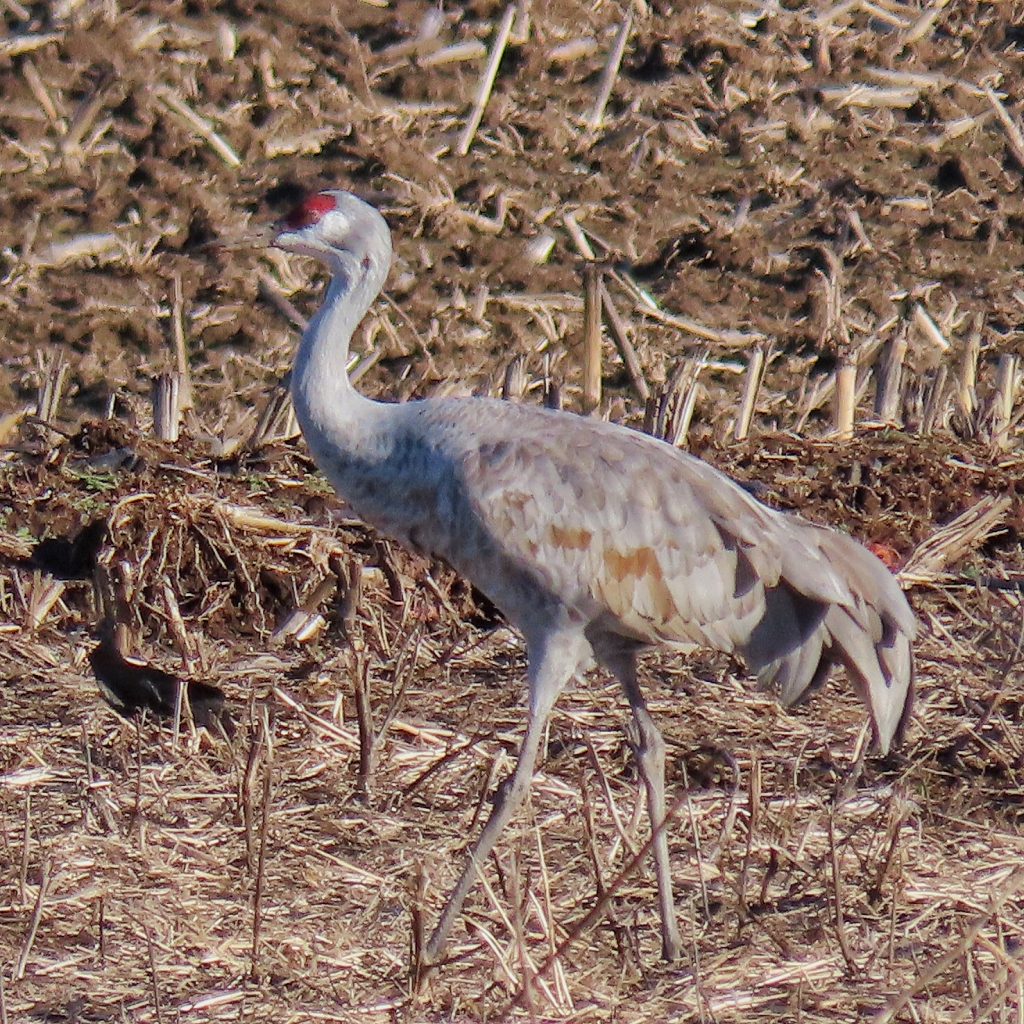
There are only a few birds that I can identify by ear, but Sandhill Cranes are at the top of the list. The primordial sounds of their calls have been described as a trilling or trumpeting, or as a broken rattle, but there is more to it than that. It is a rolling, staccato bugling that feels like it issues from the dawn of time. And it snags my attention with a force matched only by another bugling, that of an elk in rut.
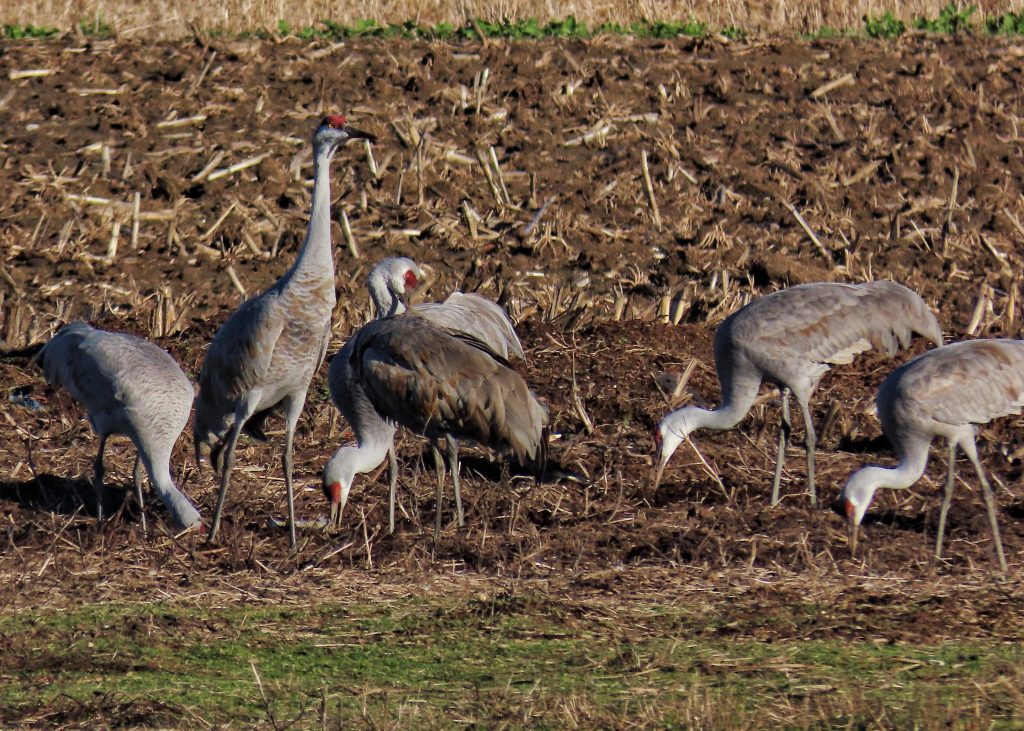
The key to the power and harmonics of a Sandhill Crane’s call lie in its unique windpipe structure. Loops of the trachea are coiled like a French horn into the hollow keel of the sternum, which acts as an echo chamber. And the increased length allows for more reverberation, deeper and fuller tones, and a longer roll to the call.

Sandhill Cranes have been around longer than any other living bird species, with a fossil having been found of a proto-Sandhill that dates to 10 million years ago! The earliest verified fossil of a Sandhill Crane dates from 2.5 mya, which is still older than any other extant bird species. So there is justification for that feeling, upon seeing and hearing a flock of them, that one is witnessing the flight of feathered dinosaurs.
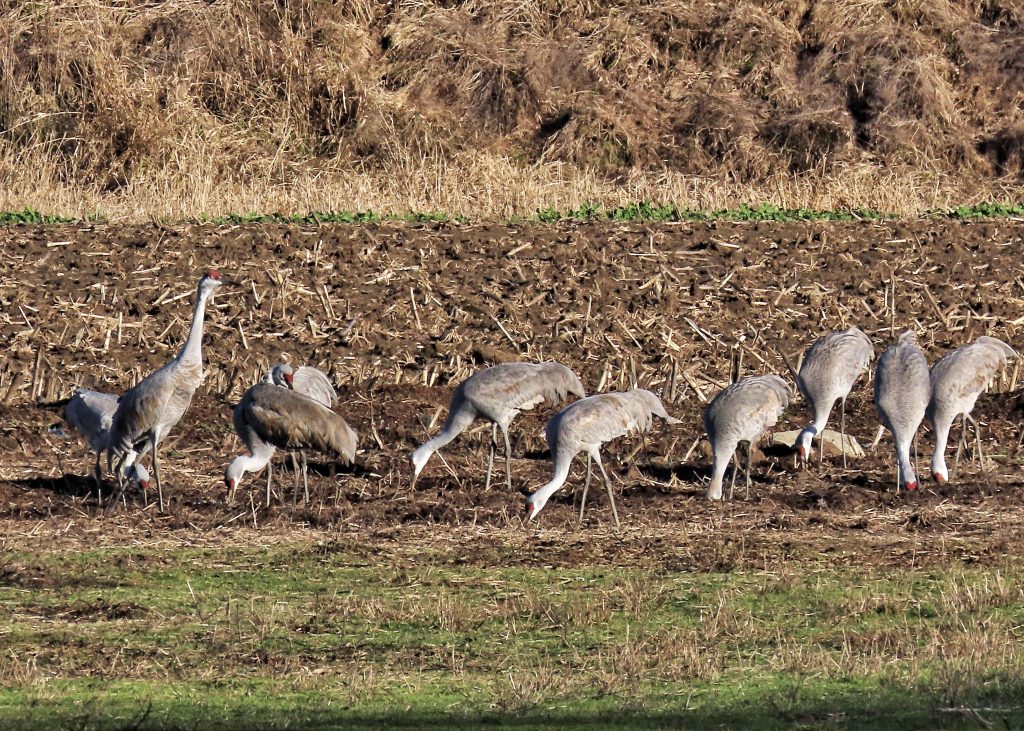
Some Sandhill Cranes have prodigious migrations, up to 14,000 miles round trip for some groups. They are able to accomplish this by being very efficient and aerodynamic fliers, and by utilizing thermals and tailwinds they average 200-300 miles per day, occasionally making as many as 500 miles!
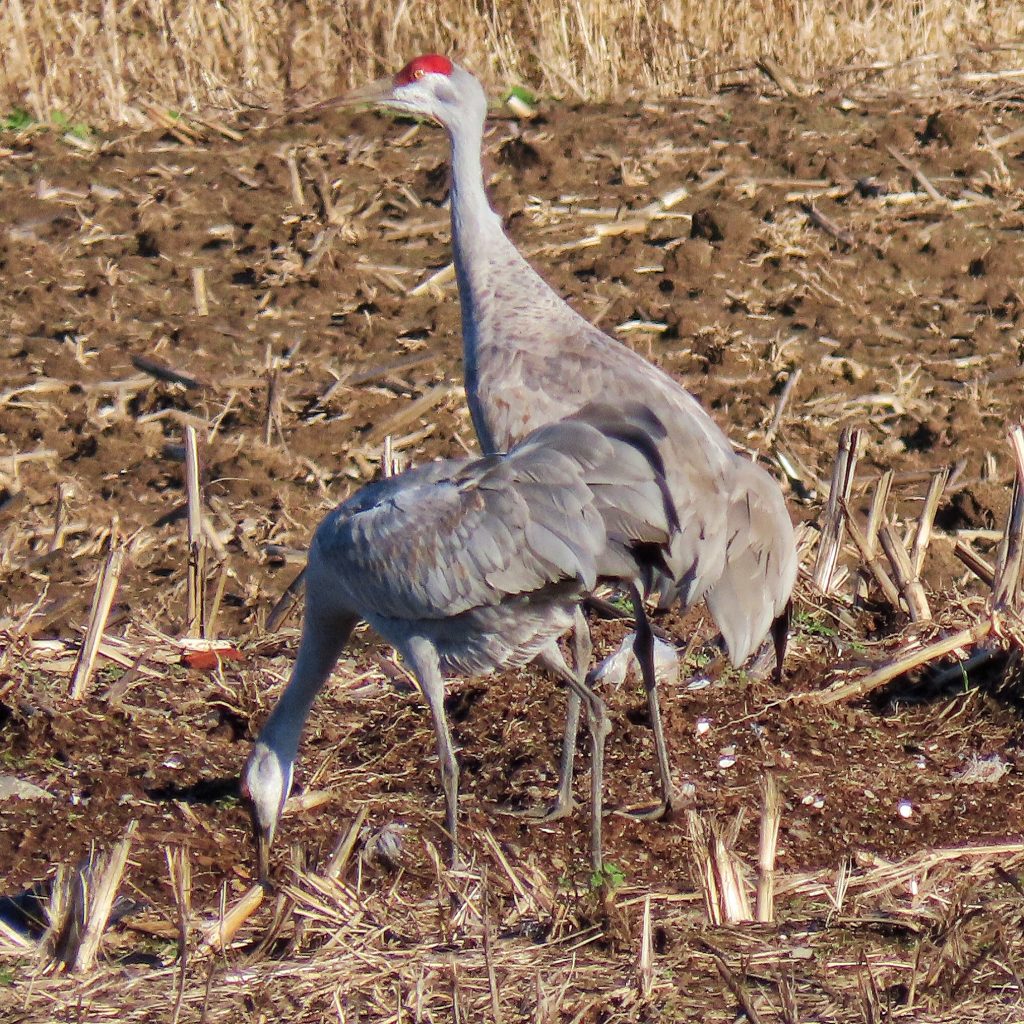
There are five subspecies of Sandhill Cranes. The most common is the long distance migrant, the Lesser Sandhill Crane (Antigone canadensis canadensis). Greater Sandhill Cranes (A. c. tabida) also migrate but much shorter distances. They are fully a third bigger in height and weight than the Lessers. There used to be another subspecies, Canada Sandhill Cranes (A. c. rowani), but it has been found to not be genetically distinct from the Greater Sandhill Cranes. All of these photos are of birds which used to be classified as Canadian sandhills, but are now Greater Sandhill Cranes.
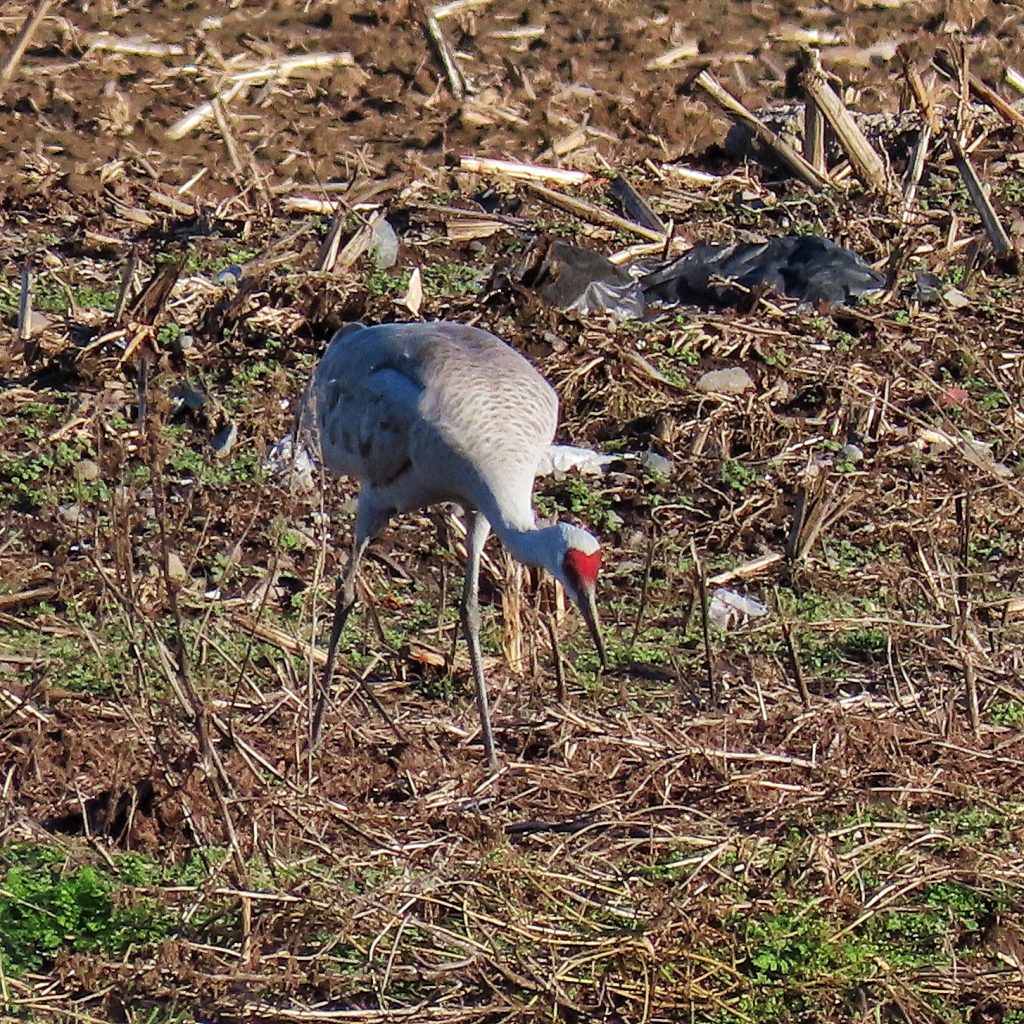
The other three subspecies are non-migratory. They are the Mississippi Sandhill Crane (A. c. pulla), the Florida Sandhill Crane (A. c. pratensis)(both of which live in the southeastern US), and the Cuban Sandhill Crane (A. c. nesiotes) which lives in the highlands of, you guessed it, Cuba.
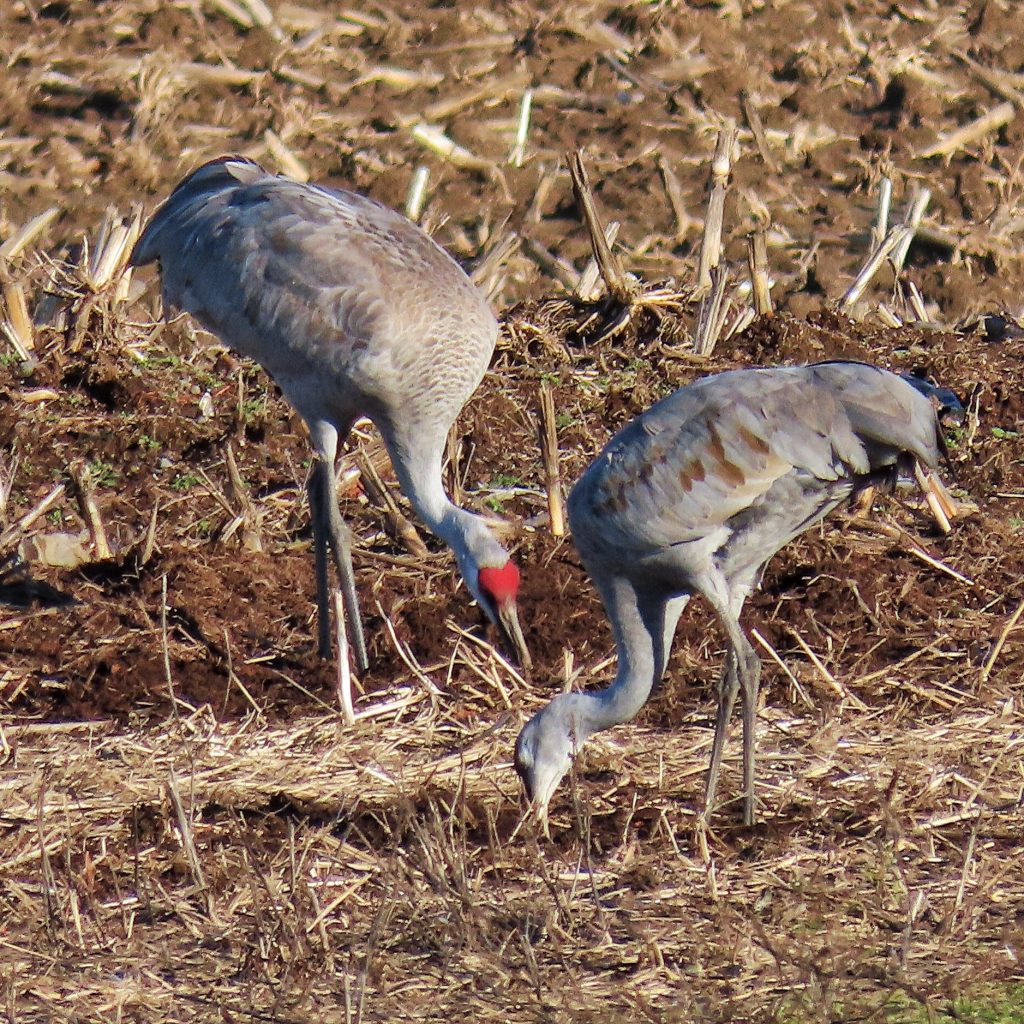
Whilst making food and rest stops during migration Sandhills self camouflage with clay and decaying vegetation. That is the source of the distinctive but unique rusty brown slashes that decorate their feathers later in the spring.
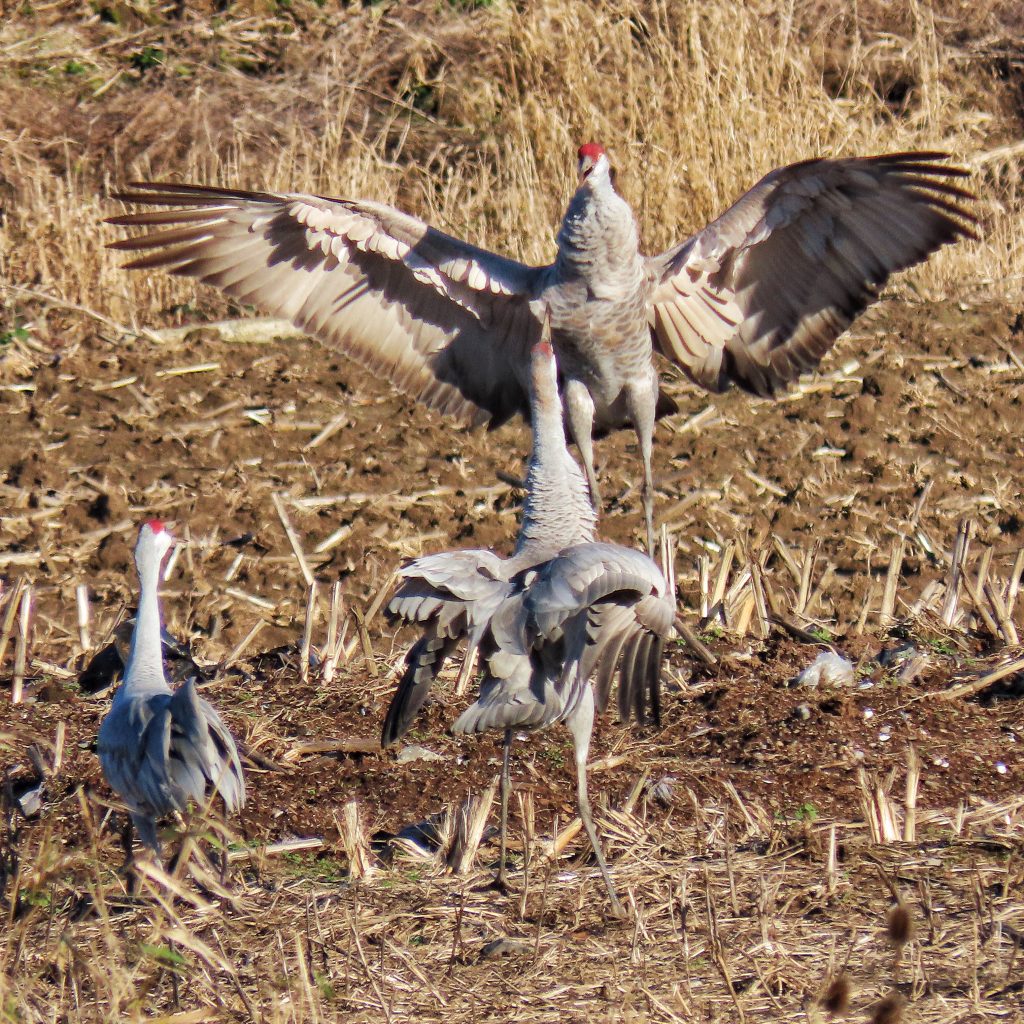
Sandhill Crane courtship begins in late winter, and continues even after they are on the breeding grounds. This courtship involves a dance wherein they leap into the air, flap their wings, bow to each other, and call in unison. Sometimes it also involves throwing sticks skyward. Cranes usually mate for life, but if breeding is not successful in the first two years they will often find a new mate.
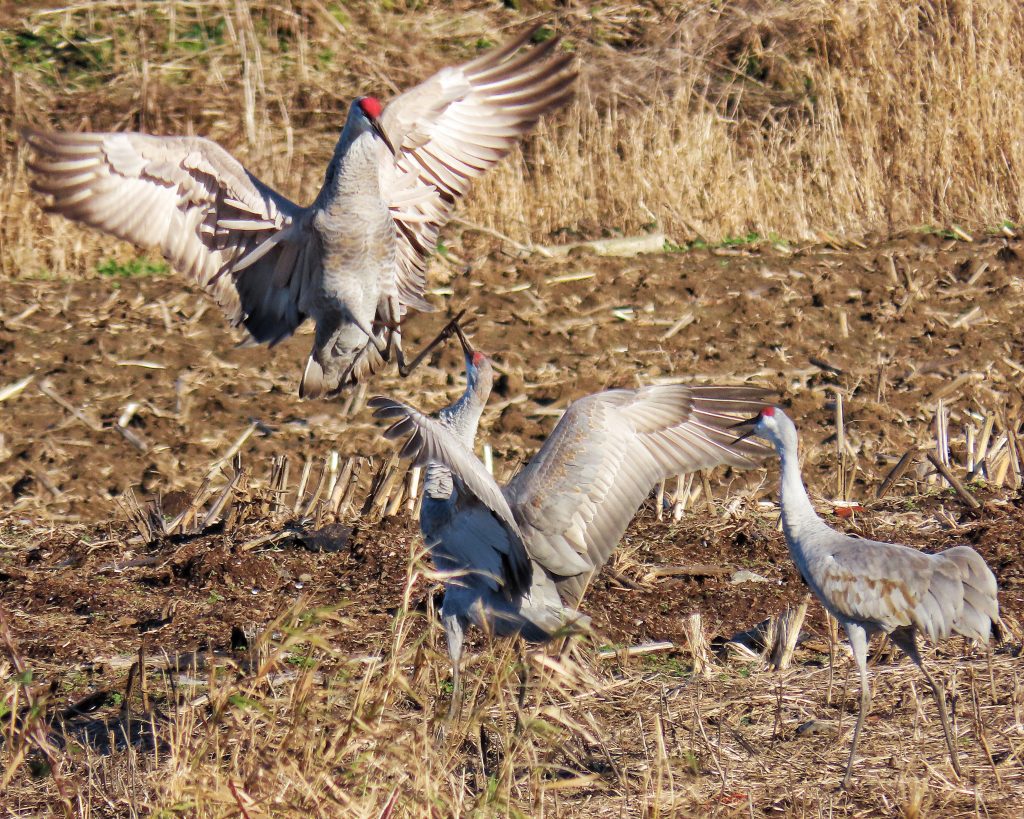
Sandhill Cranes reach sexual maturity at 2 years, although some do not breed until they are 5. They tend to live 7-10 years in the wild, and have been known to reach 21. Cranes in captivity may live over 30 years.
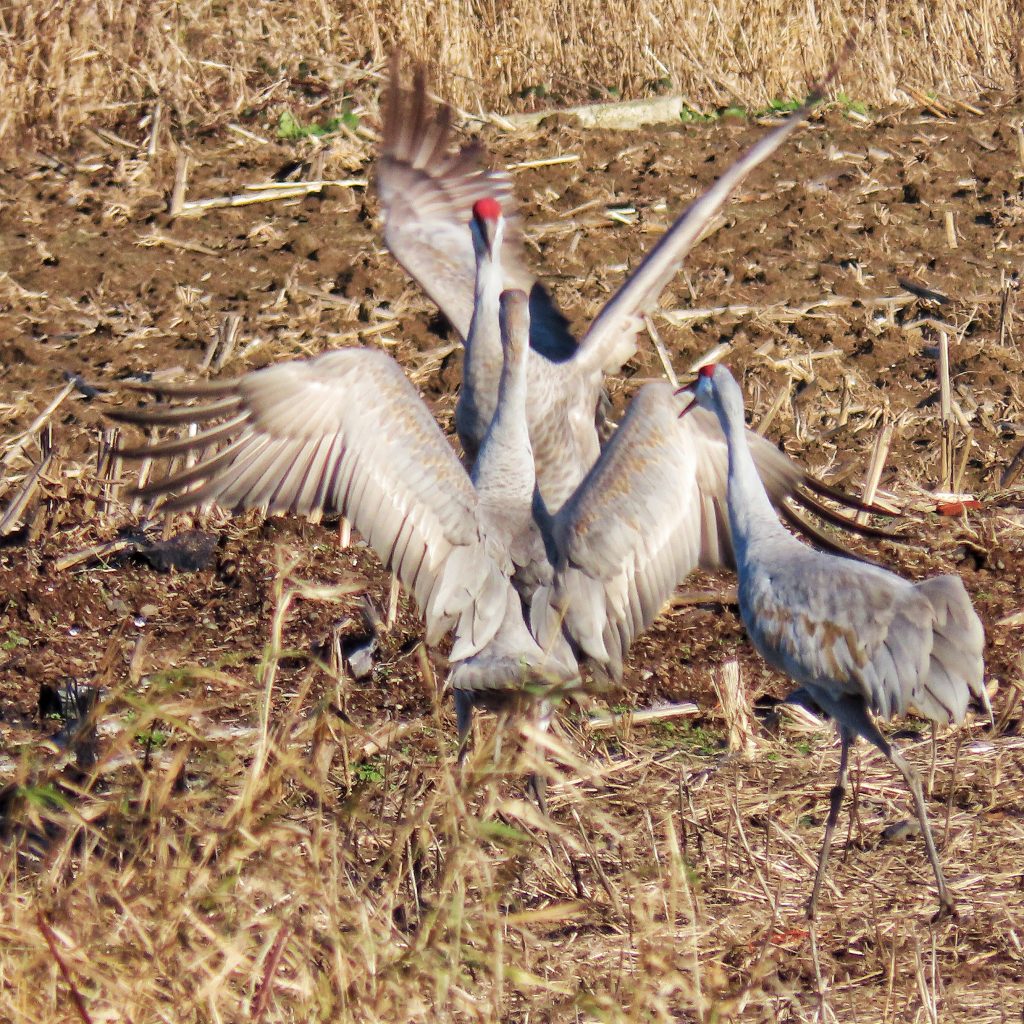
I can only hit the highlights here, folks, and am surely missing many of those. Cranes in general, and Sandhill Cranes in particular, are fascinating birds, and their complete natural history is beyond the scope of this post. For anyone looking to really delve into the cranes I highly recommend “The Birds of Heaven; Travels with Cranes” by Peter Matthiessen. It is a wonderful and informative book by a great writer.
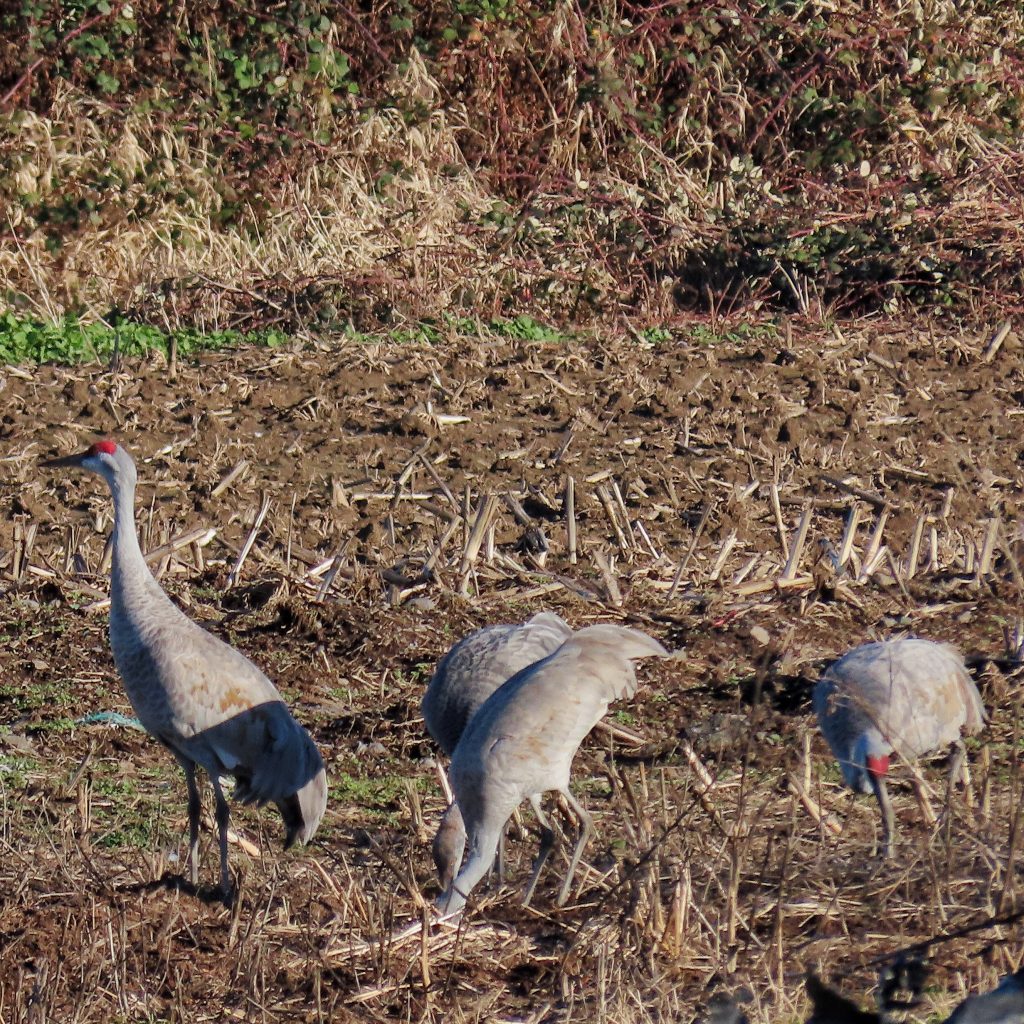
Description– Tall, grey to greyish brown crane, with a long neck, and clumps of feathers drooping from their rumps; cheek, chin, and upper throat lighter grey than body; bill dark brown to black; mature birds have a red cap on the forward part of the head which extends slightly below the eyes; neck and legs outstretched in flight.
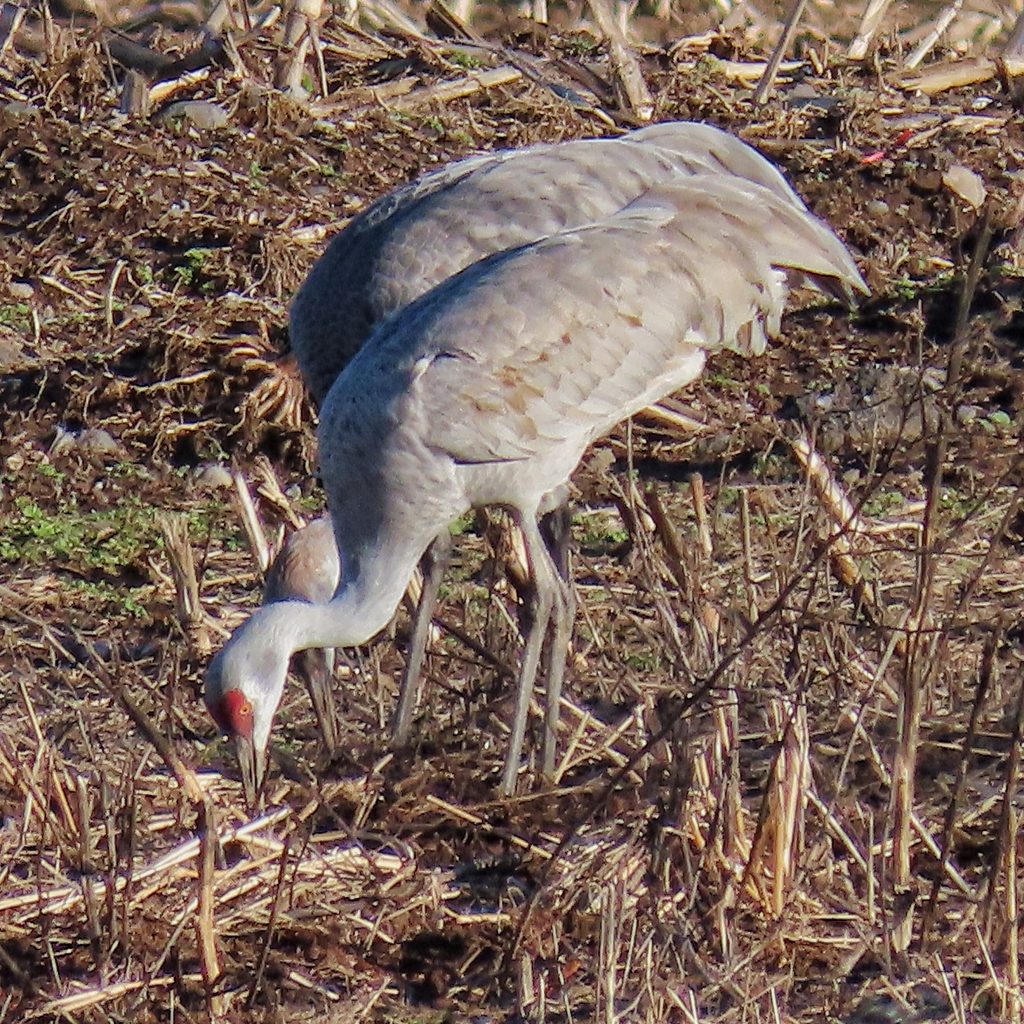
Similar species– Great Blue Herons have a yellow bill, black and white on their head, more white on the throat, and a thin, dark plume of feathers which extends from the back of the head. Also, their neck is always kinked in flight.
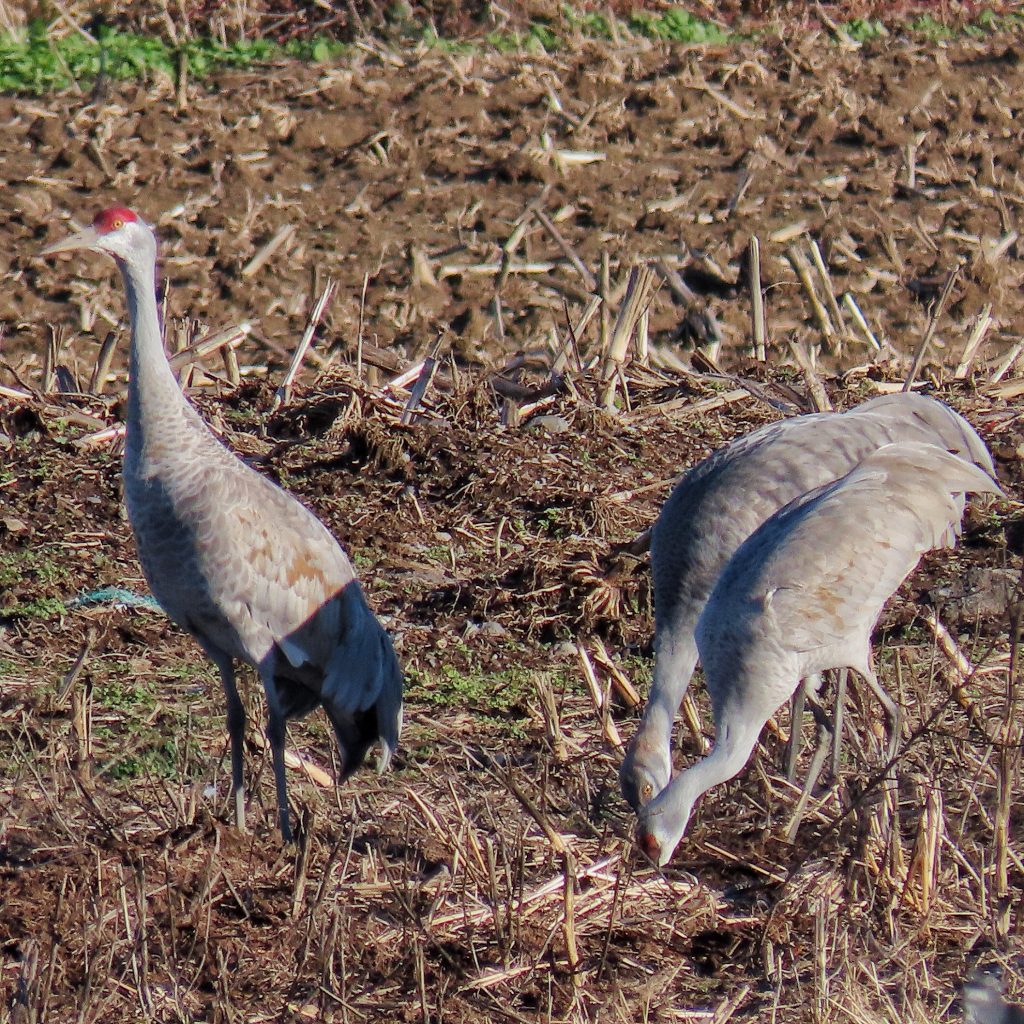
Habitat-Wetlands, sedge marshes, agricultural fields
Range– During migration Lesser Sandhills can be found throughout the region east of the Cascades, but they breed in the Arctic and winter in the southwestern US; most western Greater Sandhills winter in the Central Valley of California, and breed in eastern Oregon (especially around Malheur), and Klickitat and Yakima counties in Washington; the Sandhill Cranes that winter in the bottomlands along the lower Columbia River are what used to be called the Canadian subspecies, although they have been found to not be genetically distinct from Greater Sandhills. They breed in western BC. Many thanks to Wilson Cady for helping me figure out which subspecies of cranes I see in Vancouver, Washington.
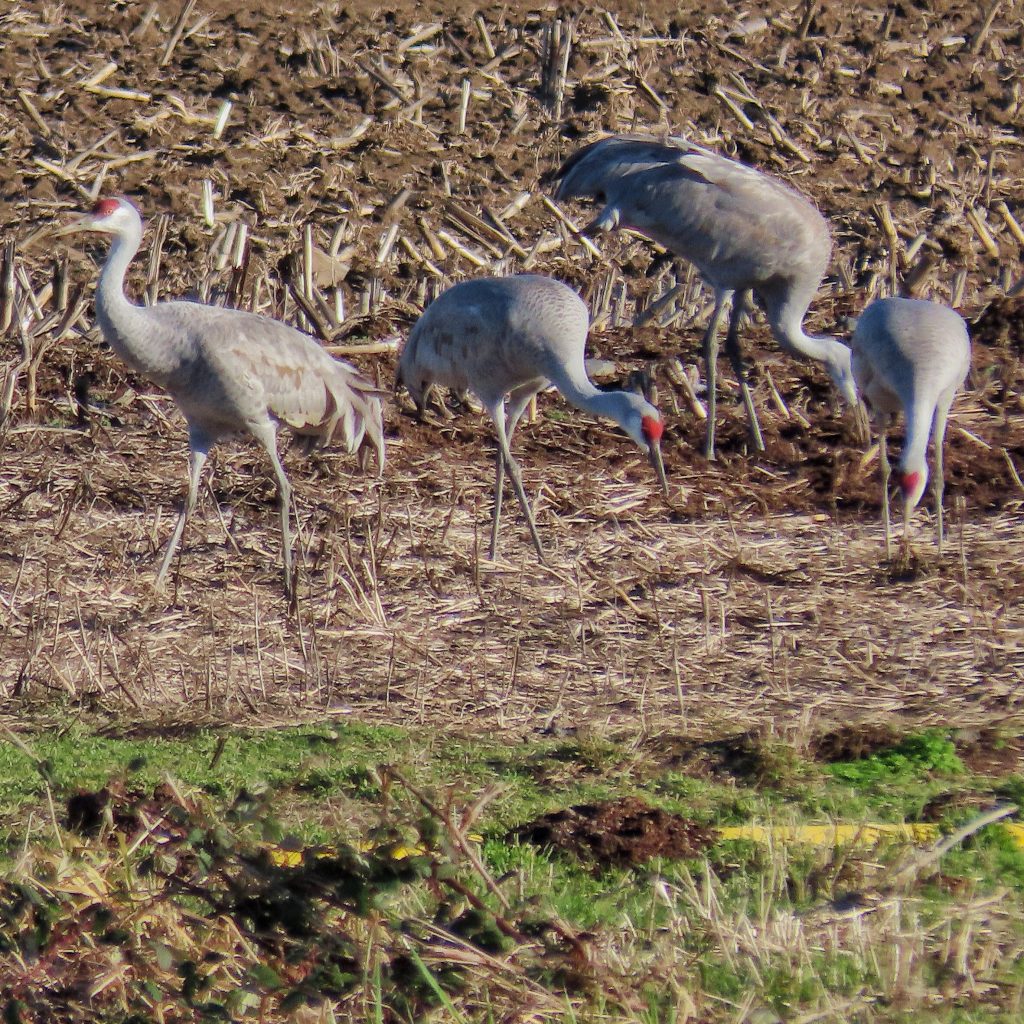
Reproduction– Actual mating takes place on the breeding grounds, and usually happens in mid spring; nests are constructed of plant material and are usually in wet areas; 1-3 eggs (usually 2) are laid, and hatch in 29-32 days; colts are born precocious and covered in down; parents feed them extensively for the the first month, and sporadically until they are independent at 9-10 months; usually only the firstborn of the clutch survives, since, being stronger, it outcompetes its sibling, which is there mostly as an insurance policy against the possibility of something catastrophic befalling the first born. However, in times of great food resources, sometimes the parents will successfully raise both of them.
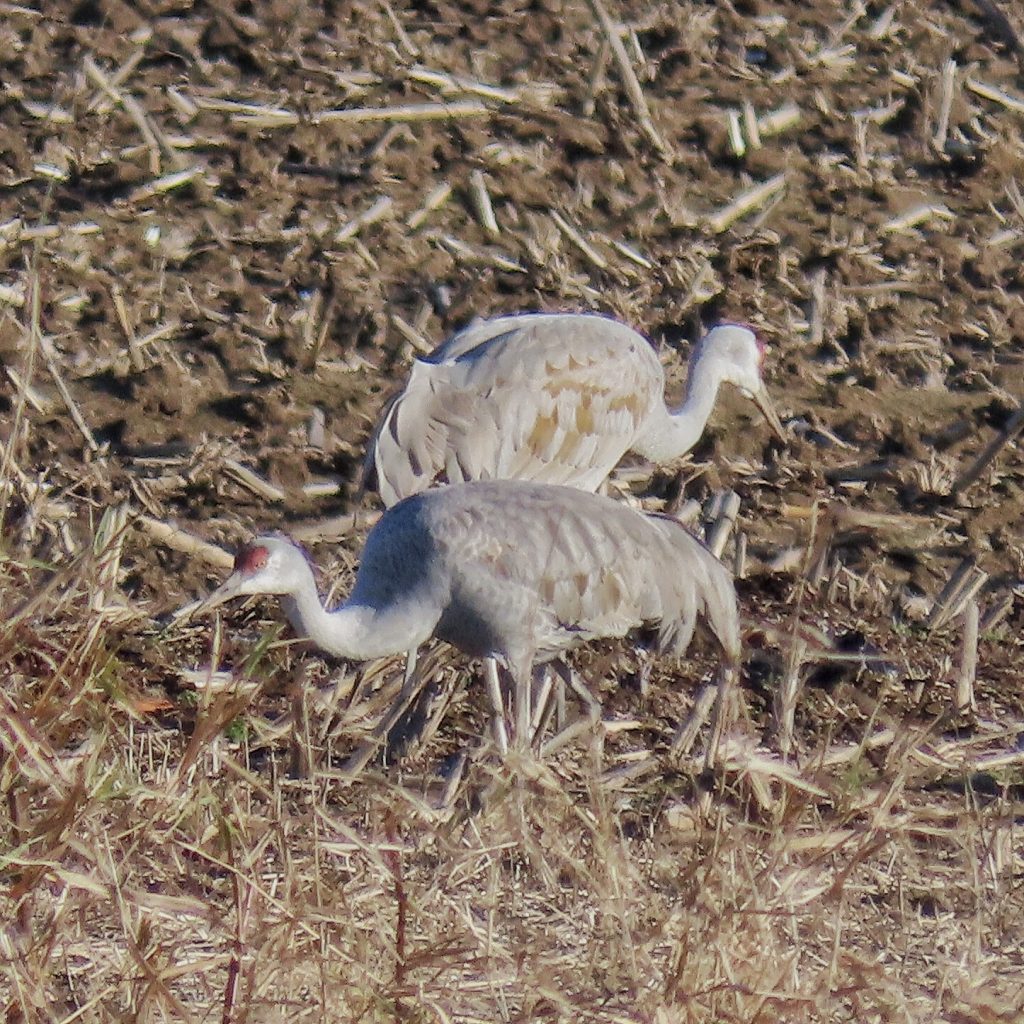
Eats-Tubers of sedges, leftover grain and corn, insects and other invertebrates, and even small mammals and amphibians.
Eaten by-Carnivores, especially coyotes and foxes, of all sizes; mink, raccoons, and ravens prey heavily on chicks and eggs.
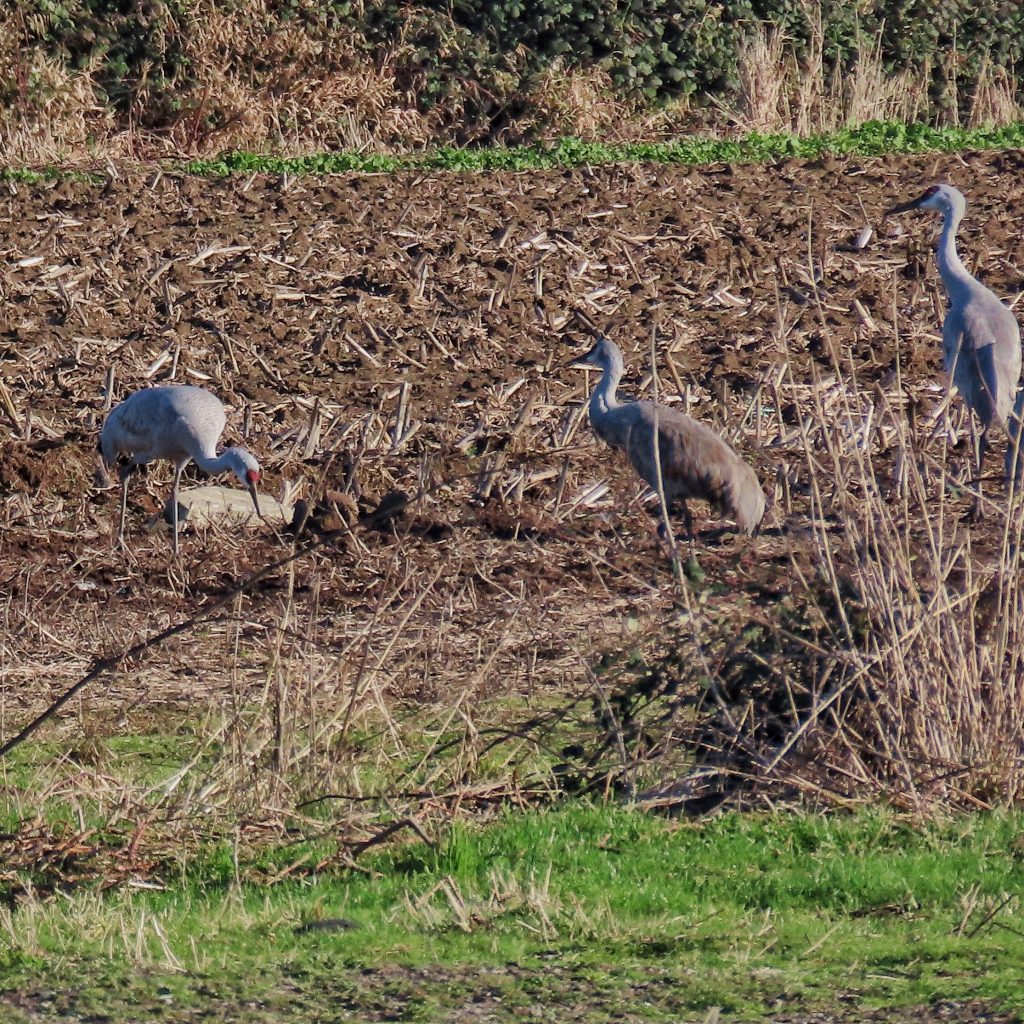
Etymology of names–Antigone is from Greek meaning literally ‘against birth’, but functionally ‘worthy of ones parents’. In Greek mythology Antigone was a tragic figure (but weren’t they all) who was imprisoned in a tomb for disobeying a king’s orders and burying her slain brother. The specific epithet canadensis implies a northerly distribution. The common name Sandhill Cranes refers to their massing (up to 500,000 birds) near the Sand Hills of Nebraska (near the Platte River) during their spring migration northward.
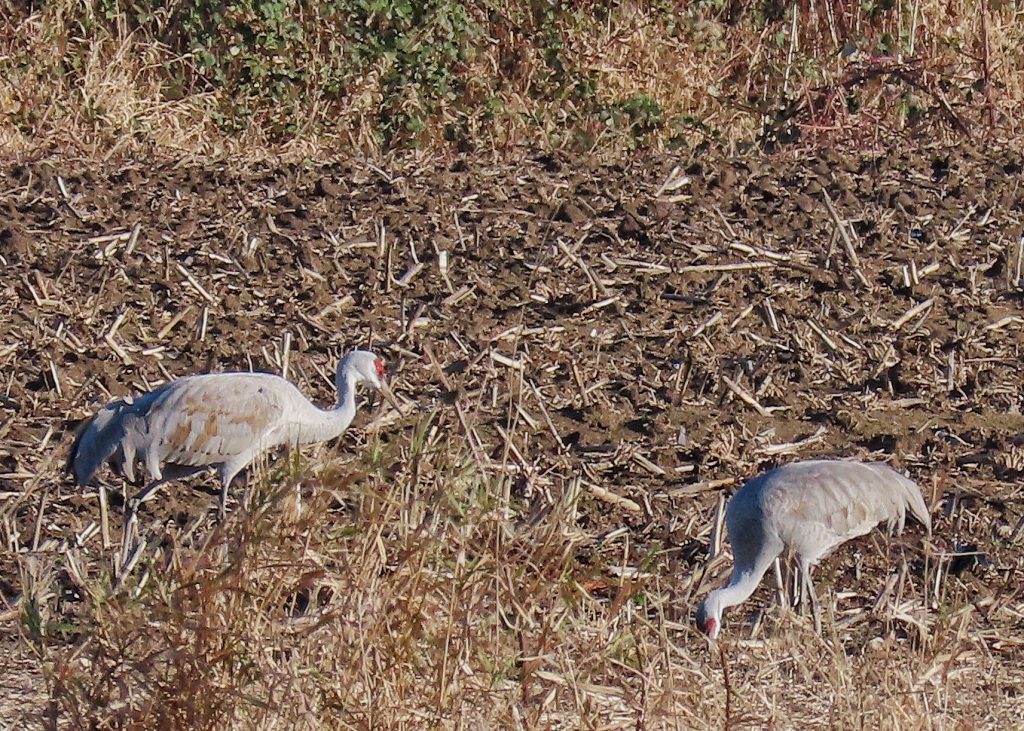
https://www.allaboutbirds.org/guide/Sandhill_Crane/overview
https://www.audubon.org/field-guide/bird/sandhill-crane
https://api.nationalgeographic.com/distribution/public/amp/animals/birds/s/sandhill-crane
https://www.treehugger.com/migrating-sandhill-cranes-mnn-film-exclusive-bryan-nelson-4869705
https://www.nwf.org/Educational-Resources/Wildlife-Guide/Birds/Sandhill-Crane
https://en.m.wikipedia.org/wiki/Sandhill_crane
https://mercury.postlight.com/amp?url=https://rowe.audubon.org/crane-facts
https://www.nwf.org/Educational-Resources/Wildlife-Guide/Birds/Sandhill-Crane
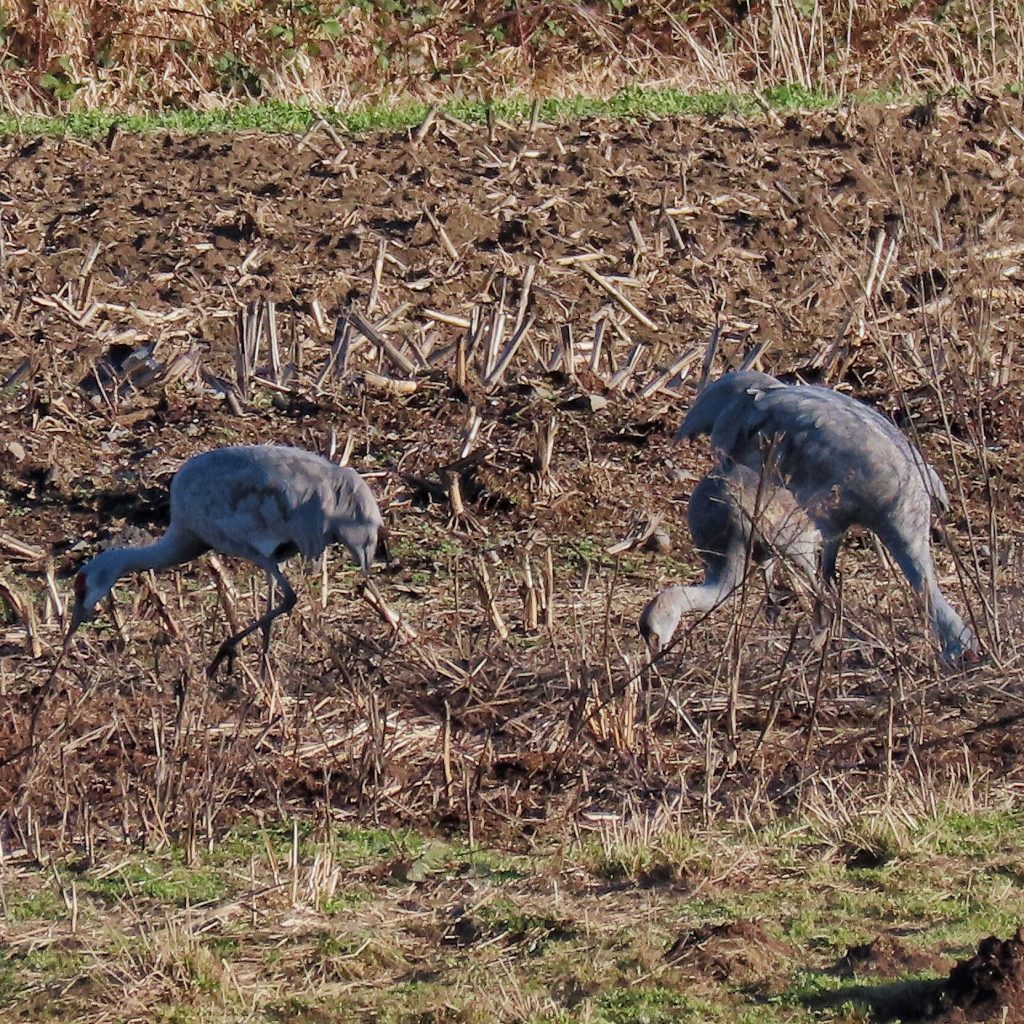
Lovely, Thanks, Dan!
Great photos. Each time I see them, of close enough, I record that primeval sound. I would love to watch them, come mating season, as they dance.
So fascinating! Your blend of poetry & science is a joy to read!